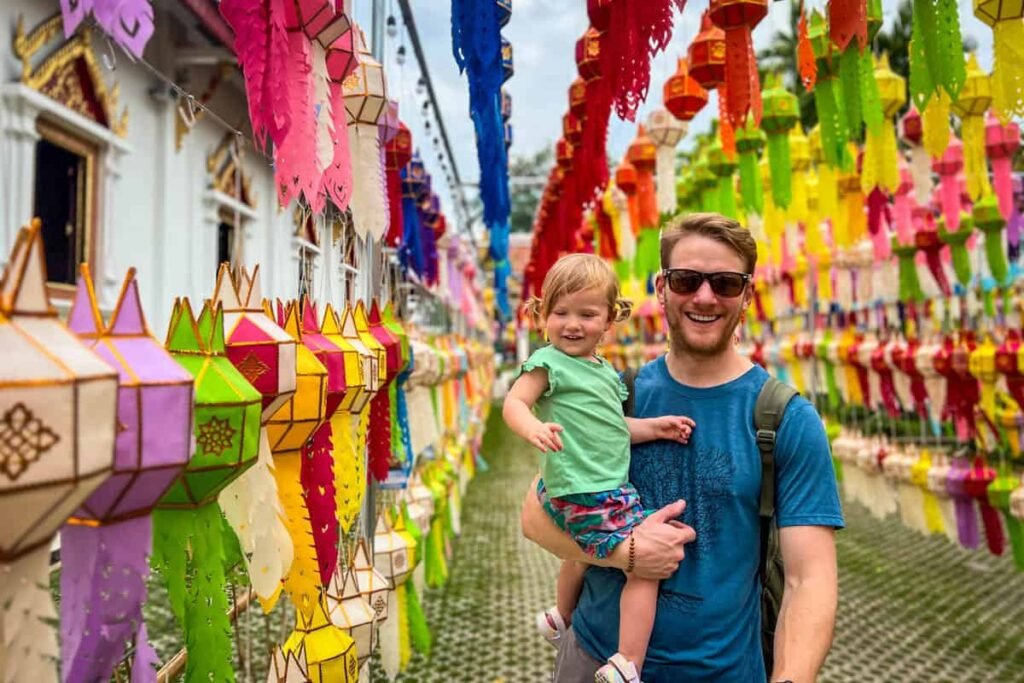Traveling with a toddler is an adventure in itself, but throw in the challenge of jet lag, and it can seem like an uphill battle. However, with a little planning and some tried – and – true strategies, you can turn those long – haul flights and time zone changes into a manageable experience for both you and your little one. We’ve been there, done that, and lived to tell the tale – multiple times. So, let’s dive into our guide on surviving toddler jet lag.
Our Family’s Travel Odyssey
Our daughter, Juniper, has been quite the little globetrotter in her first three years. We’ve whisked her away on over 60 flights, traversing nine different time zones. From the sunny shores of Hawaii, which are a mere two hours behind our home in Bend, Oregon, to the far – flung lands of Norway, a whopping nine hours ahead, and even to Japan, a staggering 17 hours ahead. Through all these travels, we’ve learned a thing or two about handling jet lag with a toddler.

Tips for Taming Toddler Jet Lag
Assess the Need for Time Zone Adjustment
Not all time zone shifts require a complete overhaul of your toddler’s schedule. If you’re only crossing 1 – 3 time zones, especially on a short trip, you might consider keeping things as they are. For instance, when driving from Oregon to New England for a fall foliage road trip, the minimal time difference meant we could skip the adjustment. This approach not only simplifies things but also reduces the hassle of readjusting when you return home. If you do decide to keep the schedule mostly the same, just ensure your child gets the right amount of sleep. For example, if you’re traveling from Seattle to NYC (a three – hour time difference), instead of a 7 p.m. bedtime, let your toddler stay up until 10 p.m. local time, which aligns with their normal bedtime back home. This way, you can enjoy some extra exploration time in the evening and a later wake – up in the morning.
Allocate Three Buffer Days
When you’re crossing five or more time zones, it’s wise to give yourself a bit of breathing room. Set aside around three days for a more relaxed itinerary. This doesn’t mean you can’t have any plans, but opt for activities that don’t demand too much time or energy. Maybe visit a local playground, like the one in Norway where Juniper had a blast. It’s a great way to get outside and stay active without overexerting yourselves. In fact, those first few days might be a good time to splurge on a nice accommodation with amenities like a pool. It’s a low – pressure activity that gets you out and moving while also providing a comfortable place to rest.
Brace Yourself for Day Three
Based on our experiences, Day 3 of a multi – time – zone trip is often when the jet lag really hits. On Day 1, after the exhausting journey of flying with a child, you’re likely too tired to notice the time difference much. Try to have dinner at the local time and stay up until a reasonable bedtime. Day 2 can be deceivingly energetic, thanks to the excitement of a new place and a good night’s sleep. But come Day 3, both you and your toddler will probably feel the effects of the time shift. However, if you’re prepared for this, you can power through and make it to a decent bedtime. Usually, by Day 4, you and your little one will be well on your way to adjusting to the new time zone.
Align Mealtimes with the Locals
One of the key steps in helping your toddler’s body adjust is to start eating at the local meal times as soon as possible. A full belly not only keeps your child satisfied but also aids in a restful night’s sleep. It’s like resetting their internal clock through their stomach.
Mind What They’re Eating
Along with proper meal timing, focus on the quality of your toddler’s meals. Ensure they’re getting a balanced diet with plenty of protein, healthy fats, and carbohydrates. In the initial days, it can be beneficial to stick to more familiar foods to make mealtime stress – free. Have some of their favorite healthy snacks on hand to avoid those dreaded “hangry” moments. And of course, try to limit sugary treats, as they’ll only lead to energy crashes.
Hydration is Key
After a long flight and with their body adapting to a new time zone and environment, keeping your toddler hydrated is crucial. Keep a water bottle within easy reach at all times and gently remind them to take sips regularly.
Don’t Neglect Yourself
Amidst worrying about your toddler, don’t forget to take care of yourself. If you’re sleep – deprived and out of sorts, it’ll be even harder to care for your child. Stay hydrated, avoid alcohol for the first couple of days if you can, and use caffeine strategically. If you’re a coffee lover, skip the caffeine after 2 p.m. but enjoy a strong cup in the morning if you’re feeling groggy. We’ve found homeopathic “No Jet Lag” pills helpful when crossing multiple time zones. Also, avoid screens after dark in the first few days to help your body’s internal clock adjust. And get outside and move – it’s beneficial for the whole family.
Replicate the Bedtime Routine
We’re firm believers in the power of a consistent bedtime routine. Whether you’re in a fancy hotel or a traditional guesthouse in Japan, doing the same things you do at home to signal bedtime can help your toddler wind down. This might include taking a bath, changing into pajamas, brushing teeth, telling stories, or singing a lullaby.
With these tips in your arsenal, you’ll be better equipped to handle toddler jet lag and make the most of your family vacation. Have you tried any of these strategies? Or do you have your own jet lag – beating tips?


